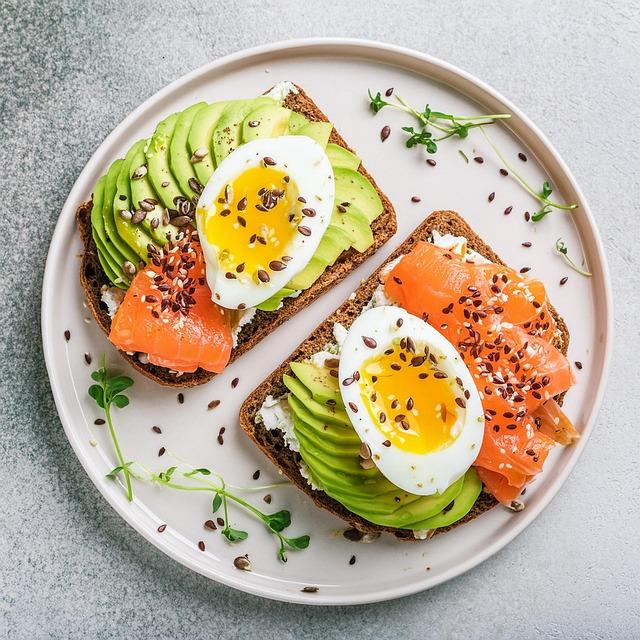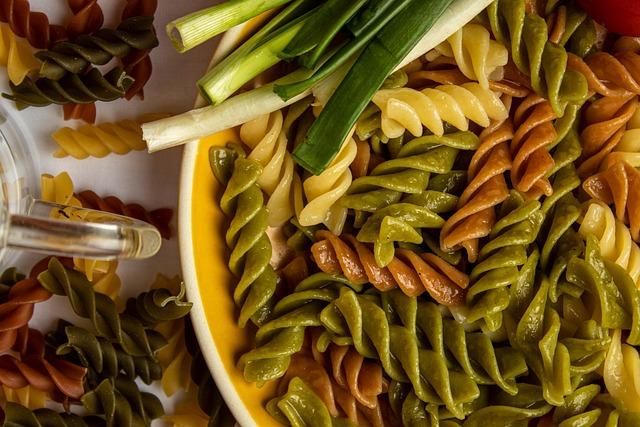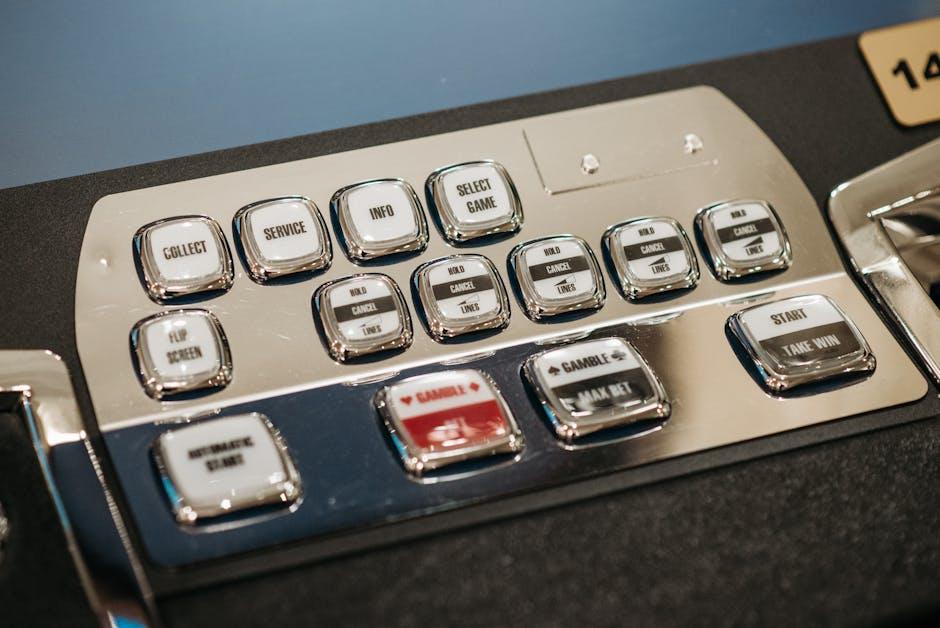Table of Contents
- Understanding the Basics of Weight Gain through Budget-Friendly Foods
- Nutrient-Dense, Affordable Staples for Building Muscle
- Smart Shopping Tips for Cost-Effective Weight Gain
- Meal Planning on a Budget: Simple Recipes for Healthy Gains
- Maximizing Your Caloric Intake with Convenient Snacks
- Q&A
- Wrapping Up


Understanding the Basics of Weight Gain through Budget-Friendly Foods
Gaining weight can often be perceived as a daunting task, particularly when you’re trying to do it on a budget. However, understanding which foods can help you achieve your weight gain goals without straining your wallet is crucial. Some nutrient-dense options include:
- Oats: High in complex carbohydrates, oats provide a slow release of energy and can be enriched with toppings like peanut butter or fruits for added calories.
- Rice: A staple in many households, rice is economical and calorie-dense, making it a great foundation for various meals that promote weight gain.
- Beans and Lentils: Packed with protein and fiber, these legumes are budget-friendly and can bulk up meals significantly.
- Potatoes: Versatile and filling, potatoes can be prepared in numerous ways and add substantial calories when paired with butter, cheese, or sour cream.
It’s not just about calories but also about the quality of those calories. Incorporating healthy fats into your diet can be a game-changer. Foods like:
- Peanut Butter: A low-cost source of healthy fat and protein that can enhance smoothies, spreads, or snack combinations.
- Avocados: Although slightly pricier, these can be bought in bulk for cost savings and are excellent sources of monounsaturated fats.
- Seeds and Nuts: Economical when purchased in larger quantities, these pack a caloric punch and are perfect for snacking or adding to meals.
creating simple yet calorie-dense meals doesn’t have to be complex. Consider these easy meal ideas that balance affordability and nutritional value:
| Meal Idea | Main Ingredients | Calories (Approx.) |
|---|---|---|
| Oatmeal with Peanut Butter | Oats, Peanut Butter, Banana | 500 |
| Rice and Black Beans Bowl | Rice, Black Beans, Avocado | 600 |
| Potato and Lentil Soup | Potatoes, Lentils, Carrots | 400 |
Emphasizing the right foods and meal combinations can make achieving your weight gain objectives not only feasible but enjoyable—even on a tight budget.


Nutrient-Dense, Affordable Staples for Building Muscle
When embarking on a journey to gain muscle without breaking the bank, consider incorporating a variety of nutrient-dense staples into your grocery list. These foods not only promote muscle growth but are also budget-friendly, making them ideal for those who are weight training. Focus on whole foods rich in proteins, healthy fats, and complex carbohydrates.
Here are some great options to explore:
- Brown Rice: A cost-effective source of complex carbohydrates that provides energy for workouts and aids in recovery.
- Lentils: Packed with protein and fiber, lentils are not only healthy but also versatile for soups, salads, or curries.
- Eggs: Often referred to as a complete protein, eggs are rich in essential amino acids, making them crucial for muscle building.
- Peanut Butter: An affordable source of healthy fats, it can easily be added to smoothies, oatmeal, or whole-grain bread.
- Canned Tuna: Economical and rich in protein, canned tuna is perfect for quick meals on days when cooking feels like a chore.
To help visualize the cost-effectiveness of these staples, consider the following table comparing protein content to price:
| Food Item | Protein (g) per Serving | Cost per 100g ($) |
|---|---|---|
| Brown Rice | 2.5 | 0.30 |
| Lentils | 9 | 0.50 |
| Eggs | 6 | 0.20 |
| Peanut Butter | 25 | 0.90 |
| Canned Tuna | 20 | 1.50 |
Incorporating these foods into your diet not only supports your fitness goals but also maintains your budget. With their high nutritional value, these staples enable effective meal planning and ensure you’re fueling your body with the essentials needed for muscle growth.


Smart Shopping Tips for Cost-Effective Weight Gain
Gaining weight doesn’t have to break the bank. One of the most effective strategies is to prioritize budget-friendly foods packed with the necessary calories and nutrients. Focus on buying in bulk, which often reduces the cost per serving. Items such as oats, rice, and pasta are not only affordable but also serve as excellent sources of complex carbohydrates, providing long-lasting energy and promoting healthy weight gain. You can mix these staples with cost-effective protein sources for a balanced approach.
Incorporating healthy fats into your meals is another cost-effective strategy. Foods like peanut butter, olive oil, and canned tuna deliver high-calorie options that can easily be added to various dishes without significant expense. Consider purchasing frozen fruits and vegetables, which retain their nutritional value while being often cheaper than fresh produce and can last longer in your pantry. Also, look for sales on whole eggs, a versatile and affordable source of protein that can contribute significantly to calorie intake.
| Budget Food | Calories per Serving | Key Nutrients |
|---|---|---|
| Brown Rice | 215 | Carbohydrates, Fiber |
| Peanut Butter | 190 | Protein, Healthy Fats |
| Canned Beans | 130 | Protein, Fiber |
| Whole Eggs | 70 | Protein, Healthy Fats |
Being strategic about your purchases can lead to significant savings while ensuring you meet your caloric goals. Utilize discount stores or local farmer’s markets to find the freshest and often less expensive options. By planning your meals around what’s on sale, you can create a balanced diet without straining your budget. don’t shy away from cooking at home—it’s usually cheaper than dining out and allows you to have full control over your ingredients, ensuring your meals remain nutritious and calorically dense.


Meal Planning on a Budget: Simple Recipes for Healthy Gains
Embracing a budget-friendly approach to meal planning can be enjoyable and fulfilling, especially when focusing on recipes that support healthy weight gain. Affordable ingredients, combined with strategic cooking techniques, can offer delicious meals that are rich in calories and nutrients. Start with staples like rice, oats, lentils, and potatoes. These foods are not only cost-effective but also provide a solid foundation for calorie-dense meals. Adding wholesome proteins such as eggs, canned tuna, or chicken thighs will elevate your meals further, ensuring you’re fueling your body adequately.
To diversify your menu, consider making the following simple yet satisfying dishes:
- Peanut Butter Banana Oatmeal: Cook oats in milk, then top with slices of banana and a generous scoop of peanut butter for extra calories.
- Chickpea Salad: Combine canned chickpeas, diced tomatoes, cucumbers, and a drizzle of olive oil for a filling, nutritious dish.
- Sweet Potato and Black Bean Tacos: Mash sweet potatoes with black beans, season with spices, and serve in tortillas for a hearty meal.
Planning your meals ahead of time also means making use of batch cooking, which can save both money and time. For instance, prepare a big batch of rice or quinoa, and pair it with various toppings throughout the week. Here’s a simple table to illustrate some budget-friendly, protein-packed meal combinations:
| Base | Addition | Healthy Fats |
|---|---|---|
| Rice | Stir-fried veggies | Avocado |
| Oats | Greek yogurt | Chia seeds |
| Pasta | Meat sauce | Pesto |


Maximizing Your Caloric Intake with Convenient Snacks
When aiming for weight gain, snacking strategically can significantly boost your caloric intake without overwhelming your meals. Incorporating nutrient-dense snacks into your day is essential, especially those that are both affordable and convenient. Consider options like peanut butter on whole-grain bread or Greek yogurt with honey; these combinations provide healthy fats and proteins, maximizing your calorie count while satisfying your hunger.
To help you make better snacking choices, here are some snack ideas that are both budget-friendly and high in calories:
- Trail mix: A combination of nuts, seeds, and dried fruits is not only portable but also calorie-rich.
- Protein bars: Look for bars with minimal ingredients; homemade options can be even more cost-effective.
- Cheese and whole grain crackers: This classic snack delivers healthy fats and complex carbohydrates.
- Hard-boiled eggs: Packed with protein, they can be made in bulk and enjoyed throughout the week.
Keep track of snacks and their caloric contents to ensure you’re reaching your daily goals. Below is a simple overview of some popular snacks along with their caloric values:
| Snack | Calories (per serving) |
|---|---|
| Peanut Butter (2 tbsp) | 190 |
| Greek Yogurt (1 cup) | 100 |
| Trail Mix (1 oz) | 150 |
| Protein Bar | 200 |
| Hard-Boiled Egg (1) | 70 |
By consistently choosing high-calorie snacks, you can effectively bridge the gap between your normal meals and your weight gain targets. Remember to opt for whole and minimally processed foods whenever possible, as these options not only provide additional nutrients but also support overall health while still helping you achieve your weight gain goals.




0 Comments